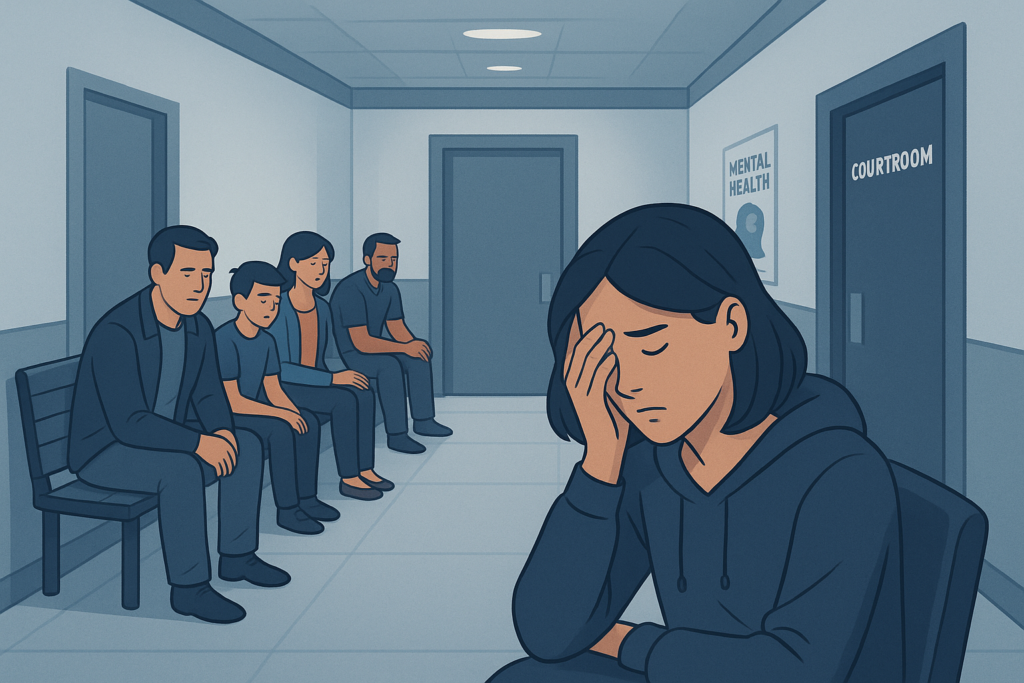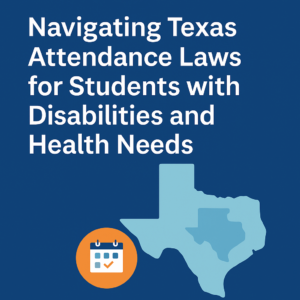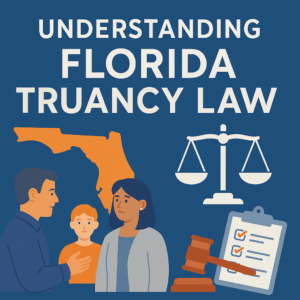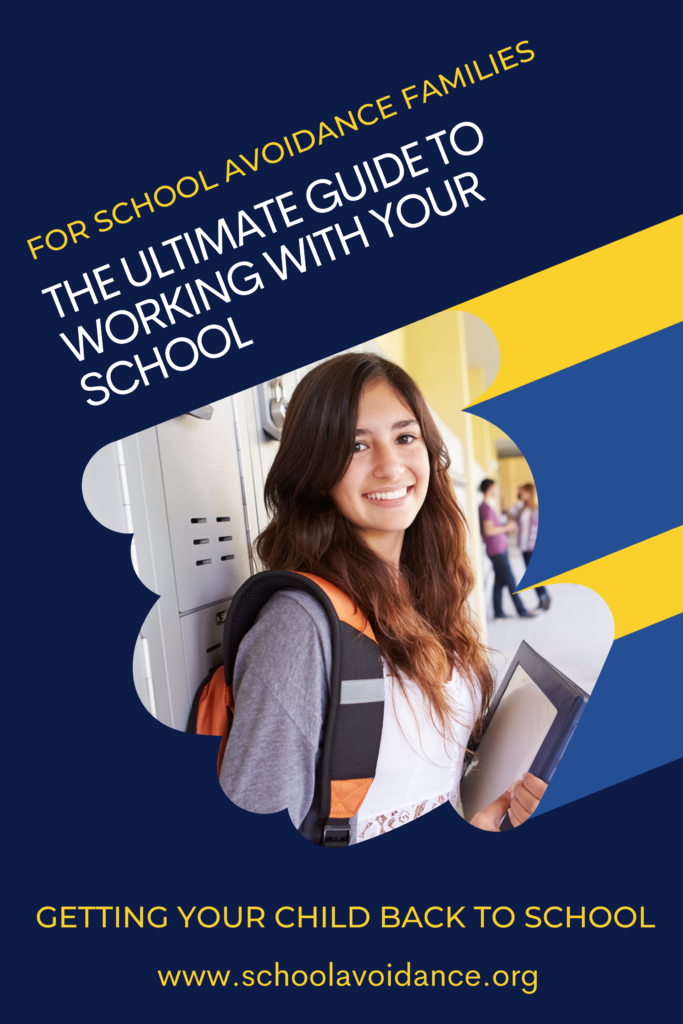What happens when a child battling anxiety is pulled into a legal process meant for lawbreakers? One parent shares a personal story—and what it reveals about the flaws in our approach to school attendance.
When my daughter was summoned to truancy court for missing school due to severe anxiety, I thought we’d finally get support. Instead, we faced a cold legal system that treated her like a criminal. This is a story for every parent who thinks, “That could never be me.” Because it can. And it was.
1. The Trigger: When Mental Health Collides with Policy
It started with a few missed school days that turned into weeks. My daughter was struggling with crippling anxiety—panic attacks, sleepless nights, nausea. Her therapist warned us that forcing school attendance during these episodes could make things worse. On the days she tried to go, she would break down in tears on the way to the building or freeze at the door. Sometimes, she would hyperventilate and plead to stay home.
As parents, we were stuck in an impossible position—knowing that school attendance was important, but also recognizing that forcing her to go felt cruel and counterproductive. We documented everything: therapy visits, episodes of distress, even video clips to show the reality we were facing.
We tried working with the school to explain and ask for flexibility, but the system had strict rules. The attendance system flagged every day she missed without a doctor’s note as “unexcused.” But therapists don’t always issue notes, and emergency visits weren’t happening for what were seen as psychological, not physical, symptoms.
Soon enough, we had accumulated more than five “unexcused” absences. That’s all it took.
2. The Letter That Changed Everything
The letter arrived on a Wednesday afternoon. Plain envelope. No call beforehand. It looked more like a utility bill than a life-altering document. Inside was a court summons.
We were informed that our daughter had been referred to juvenile truancy court for noncompliance with school attendance laws. The letter said failure to attend court could result in fines, legal penalties, or involvement with child protective services.
I sat on the couch and read it three times before calling my partner in a panic. We were completely blindsided. There had been no formal meeting with the school, no intervention team brought in, no discussion about what else could be done.
In that moment, we shifted from being a family seeking support to one suddenly labeled as problematic.
3. Court Day: Bureaucracy Over Compassion
We prepared for court like we were going to trial. I printed every therapy invoice, email chain, and calendar record. We coached our daughter to speak honestly but calmly. She was terrified.
The courthouse was sterile and unwelcoming. Other families were gathered, most with younger kids. Many looked nervous, some angry, some visibly worn out. The judge sat elevated, flanked by school officials, clerks, and a court officer.
There was no school counselor. No mental health advocate. Just a brief exchange with the judge who asked if we understood why we were there and if we had anything to say.
I did speak, explaining my daughter’s diagnosis, the therapy sessions, the efforts we had made. We handed in letters from her provider, and I hoped this would be enough. It wasn’t.
We received a written warning. If the absences continued, we could face fines or further legal action. No support was offered. The message was clear: Get your child to school, or deal with the consequences.

Common Mistakes Parents Make in Truancy Court (and How to Avoid Them)
Facing truancy court for the first time can feel overwhelming, especially when parents don’t fully understand the rules or their rights. Here are some of the most common mistakes families make during truancy proceedings—and what to do instead:
- Showing Up Unprepared: Many families walk into truancy court without key documentation like medical records, therapist letters, or email correspondence with the school. Judges rely heavily on written records. Always bring a detailed paper trail showing your efforts to address your child’s absences.
- Failing to Mention Mental Health Early: Parents often wait too long to explain that absences are related to anxiety, depression, or other mental health issues. Start this conversation in writing with the school as early as possible—and bring formal diagnoses or provider letters to court.
- Assuming the Judge Will Understand: Don’t expect the court to automatically interpret your child’s behavior as school refusal due to distress. Speak clearly, compassionately, and factually. Emphasize medical evidence and describe how symptoms affect daily function.
- Not Requesting Accommodations: Parents don’t always realize they can request an IEP or 504 Plan for a student with mental health challenges. If your child has a diagnosis, you have the right to ask for an evaluation. Documentation showing this request can strengthen your case in court.
- Accepting Blame Without Context: Some parents feel compelled to apologize or take full responsibility in court. While accountability matters, make sure the court understands the larger context—especially if you’ve been actively seeking help.
- Not Asking for Legal Help: Even if you don’t qualify for a public defender, reach out to legal aid or education advocacy groups in your state. Many offer free consultations or written guides on how to navigate truancy cases.
- Overpromising Solutions: Avoid saying things like “I’ll make sure she’s in school every day from now on” if that’s not realistic. Instead, express your commitment to creating a plan with mental health professionals and the school to support your child’s return.
Being informed, organized, and assertive in court can make a significant difference in outcomes. This isn’t just about defending your parenting—it’s about advocating for your child’s well-being and long-term success.
4. A System That Misses the Mark
The experience opened my eyes to just how outdated and blunt the truancy system really is. It does not ask why a child is missing school—it only counts the days.
There is no mechanism to identify whether the issue stems from mental health, bullying, learning differences, or something else entirely. The system is built for enforcement, not investigation or care.
It was shocking that our daughter, someone experiencing panic attacks severe enough to make her physically ill, could be seen the same way as a teen ditching class to hang out at the mall.
5. The Emotional Fallout at Home
After court, things got worse before they got better. My daughter’s anxiety intensified. She started to view herself as a failure—someone in trouble with the law. She feared school even more.
She couldn’t understand why adults were punishing her for something she didn’t feel she could control. And to be honest, neither could we. We had worked so hard to build trust and resilience, and now it felt like the system had undone all of that in one swift blow.
At home, we felt defeated. My partner and I took turns trying to stay upbeat, trying to manage the growing tension between doing what the court expected and doing what our daughter needed.
The stress crept into everything—our work, our marriage, our confidence as parents. We weren’t just fighting for accommodations anymore. We were fighting to stay afloat.

6. Finding a Way Through: Advocacy and Allies
Eventually, we stumbled across a local parent support network through an online group. That changed everything. Other parents had been through similar situations—some even worse.
They helped us understand what steps to take: how to formally request a 504 Plan under Section 504 of the Rehabilitation Act, how to frame school refusal as a medical need rather than misbehavior, and how to document everything to build a clear picture for legal and school officials.
We were connected to a special education advocate and a legal aid lawyer who reviewed our paperwork and helped reframe our communications with the school district. It worked.
Her absences were reclassified under medical exemptions. We received an emergency 504 Plan, which included flexibility in attendance, remote learning when needed, and access to counseling support.
The change was slow, but it gave us the one thing we had been missing all along: breathing room.
7. What Every Parent Should Know
- Mental health counts. Don’t let anyone downplay the impact of emotional or psychological conditions on school attendance.
- Document everything. Absences, doctor’s visits, symptoms, email communications—keep it all.
- Push for evaluations. Schools are legally required to evaluate students if a disability is suspected. Don’t be afraid to ask.
- Learn your legal rights. Section 504 and IDEA exist to protect students with disabilities. Know how to invoke them.
- Build a team. Therapists, advocates, and legal experts can shift the outcome in your favor.
8. Fast Facts and Important Things to Know
- Definition of Truancy: Most states define truancy as 3 or more unexcused absences in a set timeframe.
- Chronic Absenteeism: Missing 10% or more of the school year is considered chronic absenteeism and often triggers automatic interventions.
- School Refusal vs. Truancy: School refusal is anxiety-based. Truancy is willful. Schools often fail to differentiate.
- 504 Plans vs. IEPs: A 504 Plan provides accommodations, while an IEP offers specialized instruction. Both require proper documentation.
- Alternatives to Court: Some schools offer intervention teams or counseling before legal action—but not all do. Ask early.
Conclusion: It’s Time for Reform
Truancy court was never designed for mental health cases, yet it’s being used that way with increasing frequency. The result? Families are criminalized, students are traumatized, and the core issue—mental health—is ignored.
Our experience was painful and avoidable. If someone had simply asked, “What’s really going on with your daughter?” the trajectory would have been entirely different.
Schools, courts, and communities must develop a better process—one rooted in empathy and evidence. Early screening, trauma-informed approaches, and family-centered problem-solving are not radical ideas. They’re common sense.
Until that shift happens, parents must share stories like ours. Speak out. Show up. And push for change.
Because every absence tells a story. And not every story belongs in court.







